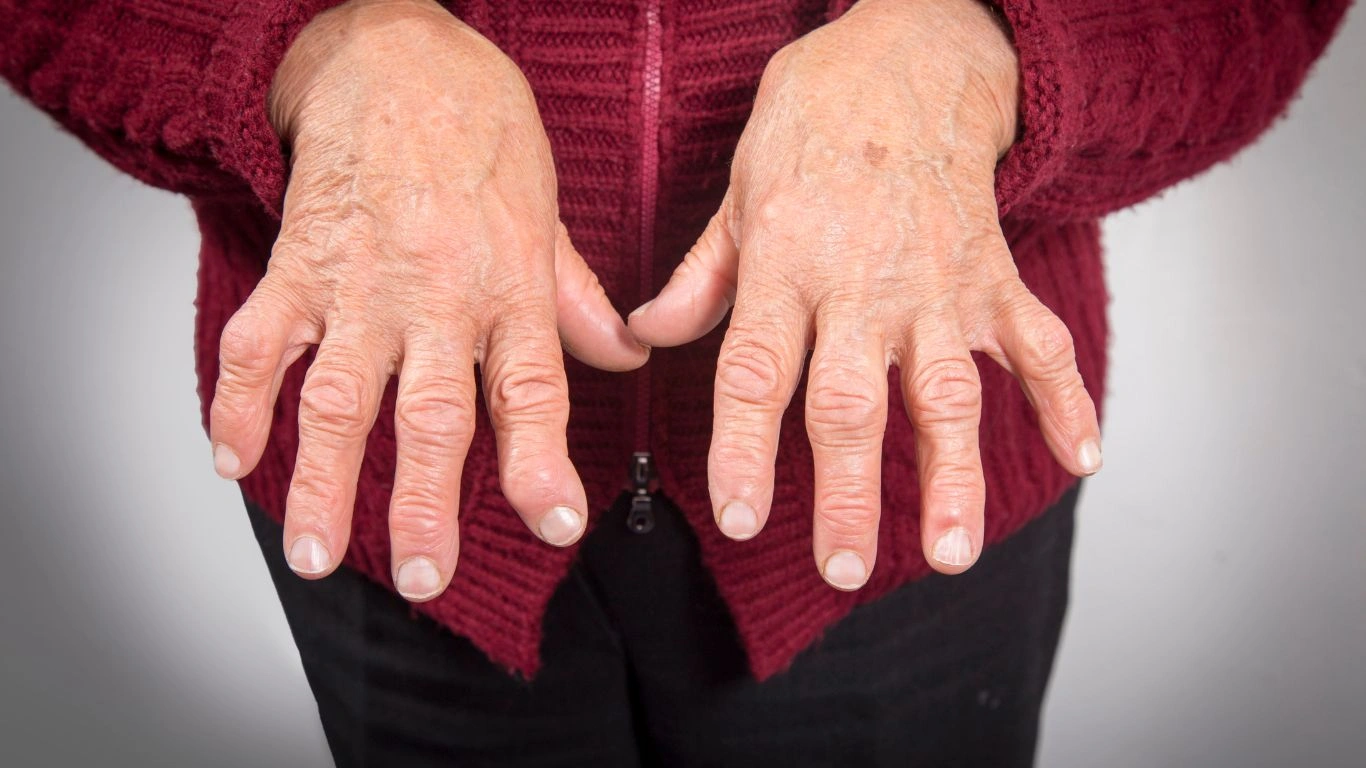Worst Foods That Trigger RA Flares and Worsen Joint Pain
If you’ve been navigating the rollercoaster ride of rheumatoid arthritis (RA), you’ve probably wondered more than once, “Is my food making this worse?” As a Rheumatology nurse practitioner, I’ve had more patients ask me about foods that trigger RA flares than almost anything else. And let me tell you—diet can absolutely make a difference. The tricky part? It’s not always the same foods for everyone, and those sneaky triggers can hide in your pantry in plain sight. Let’s break this down in a way that feels real, practical, and based on what I’ve seen over and over again in both research and real life.
Common Food Culprits That Can Spark RA Flares

One of the things I always tell my patients is this: while there’s no magic RA diet, there are absolutely repeat offenders when it comes to flare-ups. You start noticing a pattern—Jane comes in saying her hands feel like they’ve been through a meat grinder every time she eats cheese, while Tom swears his knees scream at him after a steak dinner.
1. Processed and Fried Foods
If it comes in a box and has a shelf life longer than your pet, there’s a good chance it’s trouble. Processed and fried foods are loaded with trans fats and omega-6 fatty acids, both of which can fan the flames of inflammation. I’ve had patients go from daily joint stiffness to significantly less discomfort just by cutting out fast food and pre-packaged snacks.
- French fries
- Microwavable dinners
- Donuts and pastries
- Chips and crackers
Pro tip from the clinic: If it crackles when you open it, it might not be joint-friendly.
2. Red Meat and High-Fat Animal Products
Look, I get it. A juicy burger or a ribeye steak can be downright comforting. But for a lot of people living with RA, red meat spells joint misery. It’s not just the saturated fat—although that’s part of it—but also the advanced glycation end products (AGEs) that form during high-temperature cooking. These compounds have been linked to increased oxidative stress and inflammation.
- Beef
- Lamb
- Pork
- Processed meats like bacon and sausages
I’ve had patients feel a noticeable difference in just two weeks after swapping red meat for lean proteins like turkey or fish. Sometimes the trade-off really is worth it.
3. Dairy Products
This one’s a bit controversial, and honestly, not every patient reacts the same way. But a good chunk of my RA patients report that dairy seems to make their joints feel more swollen and achy. It might be the casein protein or saturated fat that’s stirring things up.
If you’re curious whether dairy’s a trigger for you, try cutting it out for 3-4 weeks and slowly reintroduce it. A food journal is your best friend here—write down how your joints feel each day. You’d be surprised how quickly patterns emerge when you’re paying attention.
Inflammatory Ingredients Lurking in Your Kitchen

4. Refined Sugars and Sweeteners
Sugar is sneaky—it’s hiding in salad dressings, sauces, even so-called “healthy” cereals. And if there’s one thing inflammation loves, it’s a blood sugar rollercoaster. When you consume high amounts of refined sugar, your body responds with a cascade of inflammatory chemicals, like cytokines. These can aggravate your joints and amplify your pain.
- Sodas and energy drinks
- Pastries and baked goods
- Flavored yogurts
- Candy and desserts
I once had a patient who was doing everything right—eating veggies, staying active—but still flaring. Turns out she was sipping two “natural” green teas a day… loaded with sugar. Once she switched to an unsweetened version, her morning stiffness dropped dramatically. Small changes can be huge.
5. Gluten and Refined Carbs
Now, this isn’t a blanket “go gluten-free” recommendation, but I’d be lying if I said I haven’t seen some patients benefit from cutting gluten. Refined carbs like white bread, pasta, and pastries can spike insulin and lead to inflammatory responses in the body—especially in people who are already dealing with autoimmune issues like RA.
If your gut’s unhappy, chances are your joints are going to chime in too. I always say: test, don’t guess. Try a 4-week elimination and pay attention to how your body feels.

Nightshade Vegetables: Friends or Foes?

This one’s always a hot topic in the clinic. Nightshades—like tomatoes, eggplants, bell peppers, and white potatoes—are nutritious, no doubt. But for some folks with RA, they seem to be flare triggers. The compound solanine, naturally found in these veggies, is believed to contribute to inflammation in susceptible people.
I’ve had patients tell me their knees balloon up after a pasta night heavy on marinara sauce, or their fingers get stiff after roasted peppers. Do nightshades cause flares in everyone with RA? Nope. But for some, they definitely seem to play a role. That’s where elimination diets come in handy again. I always say—try going without them for a month and see how your joints react when you bring them back.
Symptoms to Watch For After Eating Nightshades
- Increased joint swelling the next morning
- New or worsening stiffness
- Fatigue that hits harder than usual
- More pain even with no activity change
It’s about tuning in to your body’s signals. You’ll know if something’s off—it’s just a matter of connecting the dots.
Alcohol and RA: A Delicate Dance

Let’s be real—sometimes you just want to enjoy a glass of wine at dinner or a cocktail with friends. But here’s what I tell my patients: alcohol is inflammatory. Period. And when you’ve got a condition like RA where your immune system is already on high alert, adding fuel to the fire might not be worth it.
That doesn’t mean you can never enjoy a drink again. Moderation is key, but be mindful. Some folks can sip occasionally with zero fallout. Others? One glass and their joints revolt the next day. I had one patient who loved her weekly sangria night—until she realized those flares were always hitting on Saturdays. She switched to a sparkling mocktail, and bam—less pain and more clarity.
Alcohol’s Sneaky Effects on RA
- It can disrupt sleep—poor sleep increases inflammation
- Alcohol affects gut health, which plays a huge role in autoimmune activity
- Can interact with common RA meds like methotrexate and prednisone
If you’re noticing post-happy-hour stiffness or joint tenderness, don’t shrug it off. That little red flag might be worth paying attention to.
The Salt Factor: More Than Just High Blood Pressure

We often think of salt as a blood pressure villain, but it’s also a player in autoimmune inflammation. High sodium intake has been shown in some studies to stimulate Th17 cells, a type of immune cell involved in autoimmune responses—including RA.
What that means in everyday terms? Eating a heavily salted meal (think restaurant fries or canned soups) might not just leave you thirsty—it can actually stir up more joint inflammation.
As a nurse practitioner, I’ve seen sodium reduction help in surprising ways. One of my patients was big on soy sauce-heavy stir-fries and thought her flares were from gluten. We scaled way back on salt for two weeks and she saw marked improvement—especially in her wrists and ankles. Sometimes it’s not the obvious stuff!
Watch Out for These High-Sodium Sneaks:
- Store-bought sauces (soy, teriyaki, barbecue)
- Frozen meals
- Pickles and deli meats
- Bread (yep—even sweet ones)
Try cooking more at home where you control the seasoning. A dash of herbs and lemon goes a long way and won’t make your joints complain later.
Food Sensitivities: The Unseen Flare Triggers
Okay, so here’s something I’m super passionate about—hidden food sensitivities. These aren’t full-blown allergies, but more like low-key troublemakers. They don’t always show up right away. Sometimes it takes a day or two before your joints start grumbling, which makes them even trickier to spot.
I often recommend an elimination diet to identify culprits. It’s not always fun, but the results can be eye-opening. You eliminate common triggers—gluten, dairy, soy, eggs, corn—for 3-4 weeks, then reintroduce them one at a time while tracking symptoms.
It’s one of the most empowering things you can do. I’ve seen people go from popping ibuprofen every few hours to barely needing it, just by tweaking their diet.
Some Common RA Food Sensitivities:
- Eggs (especially the whites)
- Soy and soy-based products
- Corn and corn derivatives (watch those labels!)
- Certain nuts like peanuts or cashews
Just because it’s marketed as “healthy” doesn’t mean it’s healthy for *you*. What matters is how your body feels after you eat it.
How Gut Health Ties Into RA Flares

If there’s one thing I’ve learned over the years working in rheumatology, it’s this: the gut and your joints are way more connected than we used to think. Your gut houses about 70% of your immune system, and when that balance is off—whether due to poor diet, stress, antibiotics, or food sensitivities—your immune system can start misfiring. Hello, RA flare.
We call this the gut-joint axis, and while it sounds a bit technical, the idea is simple: a leaky or inflamed gut can trigger autoimmune responses, which in turn, can aggravate your joints. I’ve seen patients with persistent RA symptoms who finally got relief—not from a new med—but by healing their gut. It’s pretty amazing.
Foods That Support Gut Health (and May Reduce Flares)
- Fermented foods like kimchi, sauerkraut, and kefir
- Prebiotic fibers (think garlic, onions, and asparagus)
- Bone broth (rich in collagen and amino acids)
- Low-sugar plain yogurt with live cultures
If you’re dealing with RA, don’t underestimate the power of your microbiome. A balanced gut = a calmer immune system = happier joints.
Anti-Inflammatory Swaps That Can Make a Real Difference

By now, we’ve covered a bunch of foods that trigger RA flares, but let’s pivot to something more empowering: what to eat instead. I always tell my patients, “Don’t just think about what you’re cutting out—think about what you’re adding in.” Your plate can be your painkiller if you build it right.
Easy Food Swaps to Calm Inflammation
- Swap red meat with wild-caught salmon or sardines for those omega-3s
- Use avocado or olive oil instead of vegetable oils
- Trade white bread for sprouted grain or almond flour alternatives
- Snack on berries and walnuts instead of chips or cookies
One of my favorite stories? A patient who replaced her nightly ice cream habit with frozen blueberries and coconut milk. She said not only did her knees feel better, but her energy improved too. Small steps, big changes.
Anti-Inflammatory Pantry Staples I Recommend Often
- Turmeric (with a pinch of black pepper)
- Ginger (fresh or powdered)
- Green tea or matcha
- Chia seeds and flaxseeds
- Dark leafy greens (spinach, kale, arugula)
I always keep turmeric and ginger in my kitchen—and not just for cooking. I use them in tea or smoothies, and they’ve become part of my daily wellness routine. Patients often ask, “Is it really that simple?” Honestly, yes. Supporting your body doesn’t always mean taking more pills—it often starts with what’s on your plate.
Final Thoughts: Your Body Knows Best
At the end of the day, rheumatoid arthritis is incredibly personal. What inflames one person’s joints might be perfectly fine for someone else. That’s why I always emphasize tuning in and tracking your own body’s responses. A food journal can be more insightful than any lab test when it comes to flare triggers.
Here’s what I often suggest to my patients:
- Keep a detailed food and symptom journal for at least 3 weeks
- Eliminate common triggers one at a time—don’t try to do it all at once
- Notice patterns in your energy, pain levels, and sleep
- Talk to your provider before making major diet changes, especially if you’re on meds
As someone who’s worked closely with RA patients for years, I can confidently say this: the power of food is real. Don’t underestimate it. Every meal is a chance to either fuel inflammation or fight it.
References
- https://www.arthritis.org/
- https://www.rheumatology.org/
- https://www.nih.gov/
- https://www.healthline.com/
Disclaimer
This article is for informational purposes only and is not intended as medical advice. Always consult your healthcare provider before making changes to your diet, medications, or lifestyle, especially if you have rheumatoid arthritis or other chronic conditions.

Tarra Nugroho is a dedicated Nurse Practitioner with a strong foundation in family and preventive care. She brings both compassion and clinical expertise to her practice, focusing on patient-centered care and health education. As a contributor to Healthusias.com, Tarra translates medical knowledge into clear, empowering articles on topics like women’s health, chronic disease management, and lifestyle medicine. Her mission is simple: help people feel seen, heard, and informed—both in the clinic and through the content she creates. When she’s not caring for patients, Tarra enjoys weekend hikes, plant-based cooking, and curling up with a good health podcast.






